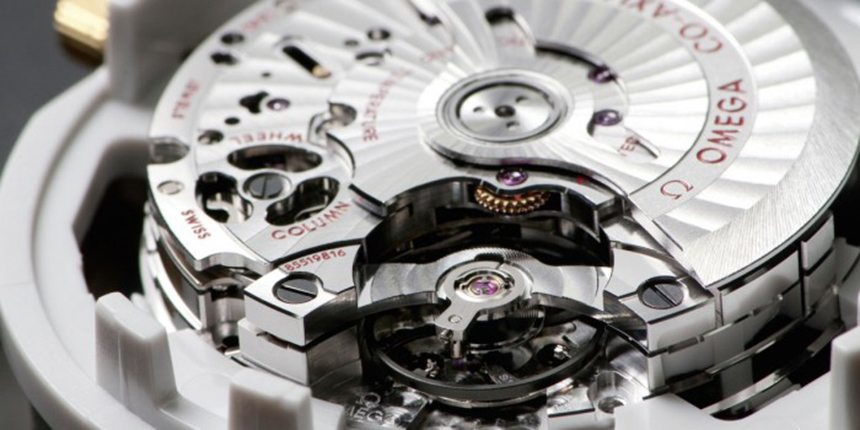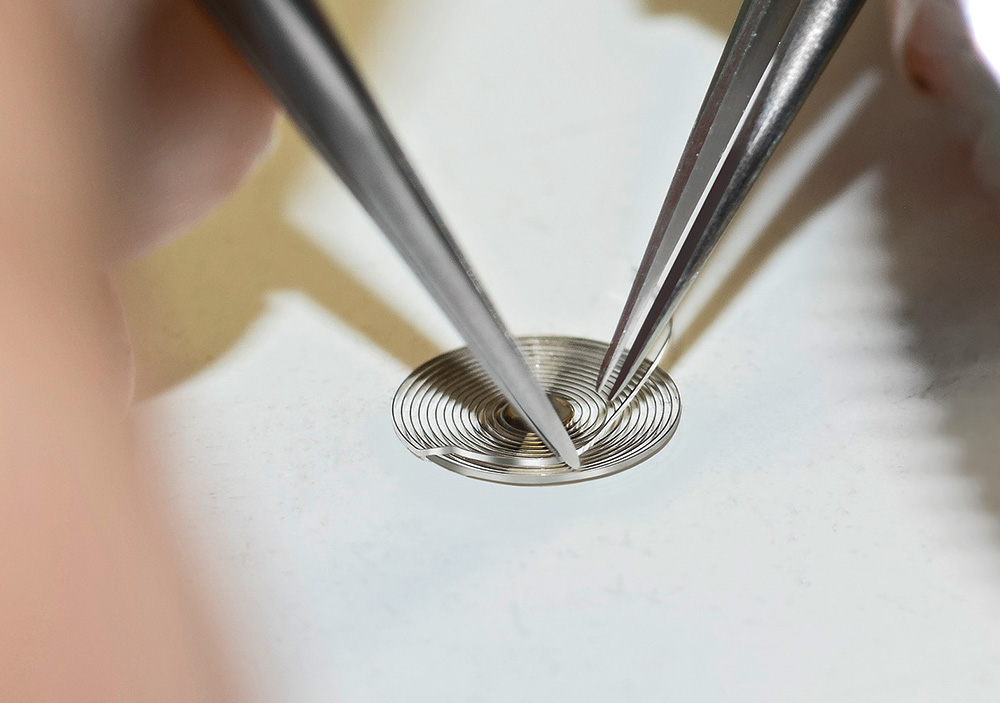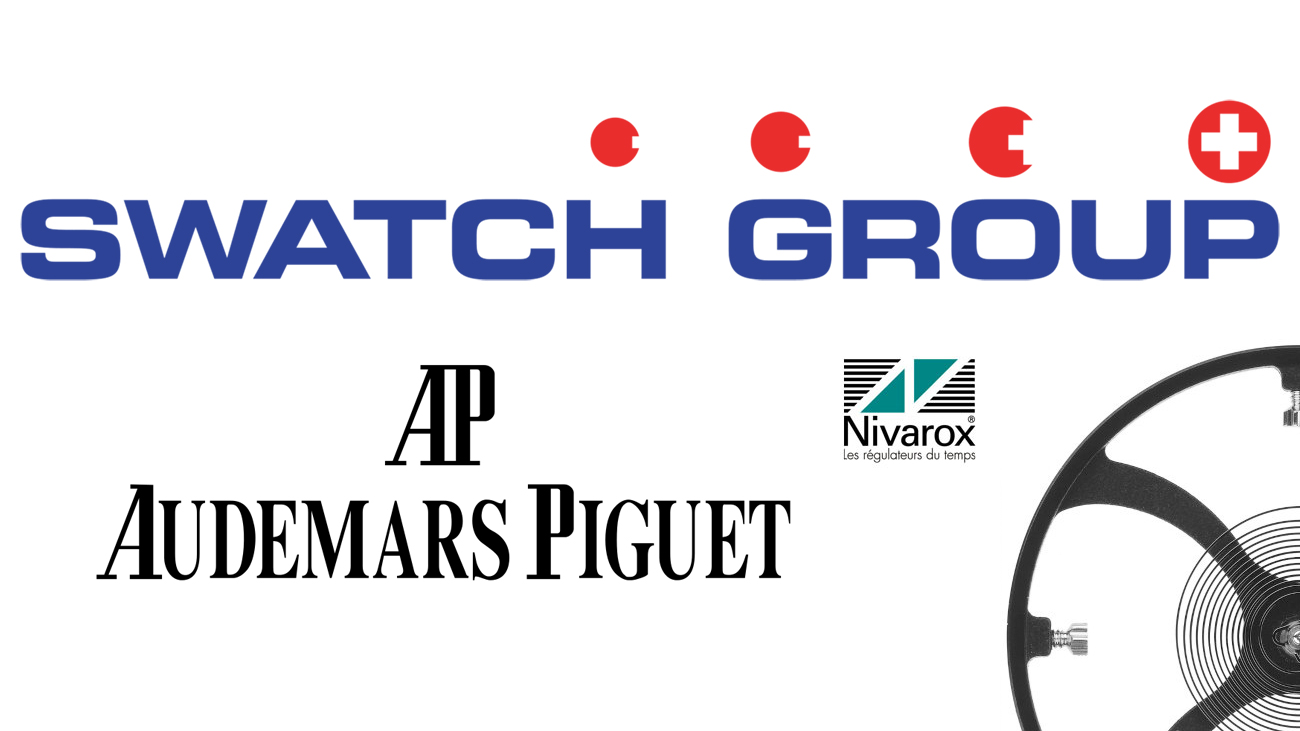Nivachron is a metal alloy reportedly made mostly from titanium – a metal not typically associated with balance springs. The precise formula of Nivachron is of course a secret, but it is probably produced by Swatch Group’s Nivarox (aBlogtoWatch visit here) company which is often considered the world’s foremost authority of balance spring technology and production. The Swatch Group makes it clear that the main purpose of Nivachron is to shield against the effects of magnetic fields, as well as to offer stable performance between wide temperature ranges (another environmental factor which can affect wristwatch performance). Nivachron works simply because magnetic fields don’t affect it – as opposed to being shielded against magnetic fields, as was the historic solution to the magnetism problem in timepieces.
Swatch Group only briefly mentions the existing leader in balance spring material technology which is silicon. It is a reasonable question to ask why the Swatch Group is so excited about the release of antimagnetic balance springs when they already produce a large number of antimagnetic balance springs. The Swatch Group, among many other watch makers including Rolex and Patek Philippe (but not Audemars Piguet, I believe) produce timepieces equipped with silicon hair springs which are known to have excellent performance. Why, then, is there excitement about Nivachron?

I don’t know the exact answer, but in my opinion it has to do with the economics. Silicon parts are expensive and complicated to produce with high error rates in regard to parts which must be thrown away. The production of silicon balance springs is thus both slow and expensive. That means given the current state of silicon part production technology, it is not possible to mass produce silicon balance springs with a sufficient economy of scale to allow for their inclusion in the most affordable mechanical watches. Nivachron promises much of the benefits of silicon with presumably a much more affordable price. That means the relatively exotic technology of having magnetism-ambivalent wristwatches is about to become much more accessible in price soon. We can also anticipate that many of the Swatch Group brands such as Longines, Tissot, Hamilton, and Rado will start to equip their products with Nivachron-based movements.

More interesting is the idea that the Swatch Group will put Nivachron balance springs in many of the most popular ETA (also a Swatch Group company) movements. ETA produces movements for both the Swatch Group and select partners which ETA sells movements to. Over recent years, ETA’s decision to stop selling movements to as many outside companies spurred the rise of a few competitors. One of the most prominent ETA competitors is Sellita – who in the near future may no longer be able to say that their movements are “1:1” substitutes of ETA movements. The Sellita SW200, for example, is designed to fit any timepiece engineered to use an ETA 2824 automatic. If the ETA 2824 movements of the near future include antimagnetic Nivachron balance springs, then Sellita will either have to up its game or perhaps reduce their prices.
It isn’t clear in what capacity Audemars Piguet immediately benefits from having access to Nivachron balance springs. Despite the fact that these balance springs can increase the performance of their timepieces, in the luxury watch industry perception is important. Audemars Piguet might not want to jump at the chance to inform its consumers that their previous watches were susceptible to magnetism in a manner the customer may not have been aware of. More so, the high price points of Audemars Piguet watches seem to suggest that they could easily get away with using silicon balance springs.

Some watch makers are, however, ideologically opposed to using anything but traditional materials (like metal) in movement production. It could be that Audemars Piguet will brand the metal Nivachron hairsprings in a way unique to the haute horology nature of the brand, and that the company prefers this technical solution to magnetism because it might not require them to change any material qualities in the architecture of their movements. Thus, Nivachron might be the most efficient way for Audemars Piguet to equip their existing technology with a new feature (antimagnetism) which more and more customers may soon be demanding.
No specific product inclusion or release date plans for Nivachron has been announced at this time. The Swatch Group has yet to inform us when Nivachron-based products will be available let alone introduced to the media. It would be logical to assume that the first Nivachron balance spring-based movements and watches will debut in the first or second quarter of 2019 – around the time when the Swatch Group brands would have traditionally found themselves debuting products at Baselworld. swatchgroup.com

